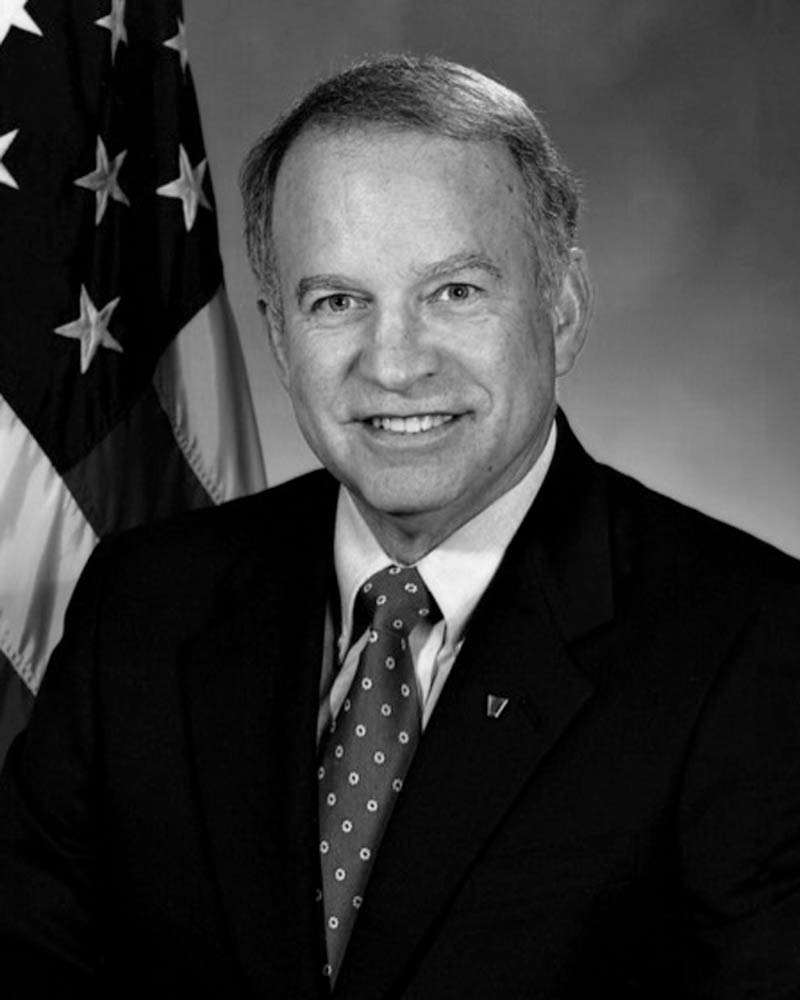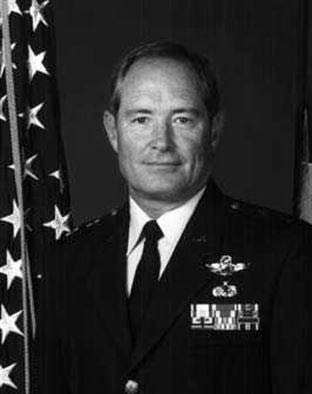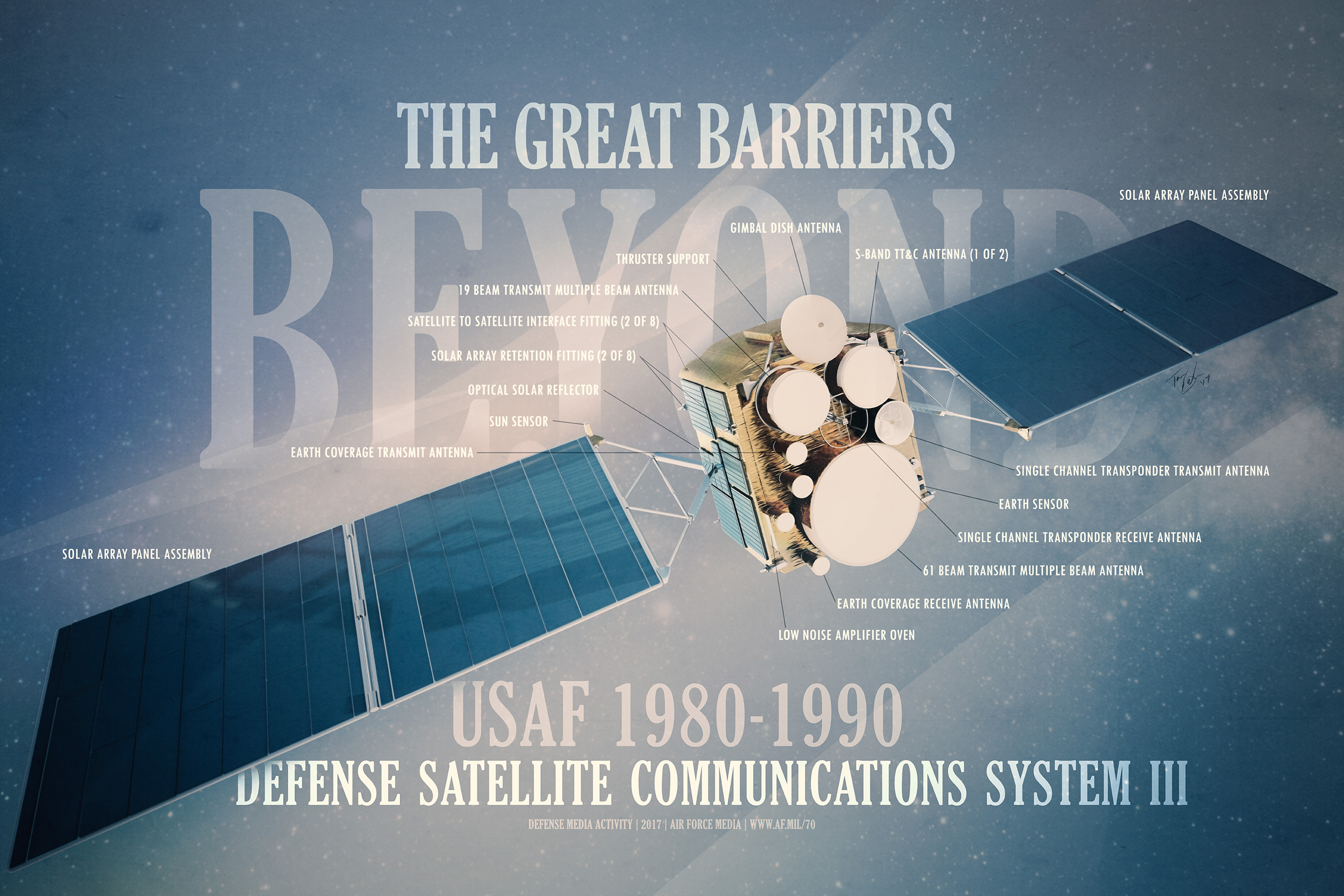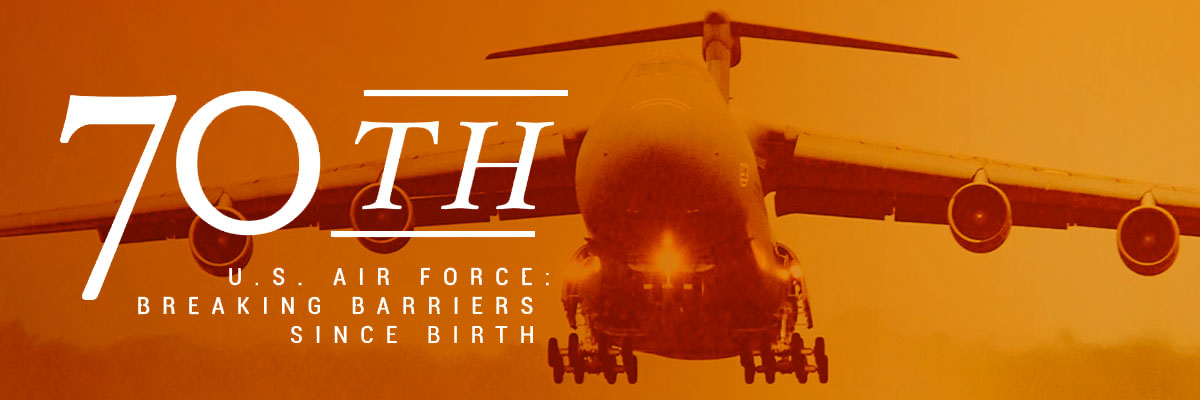
Aerospace events
The Air Force in the 1980s made many impacts throughout the U.S. and the world.
In 1980, the Air Force added 40 new fighter wings and began dedicating units and aircraft to electronic warfare and the suppression of enemy air defenses.
On March 12 – 14, 1980, two B-52 Stratofortress aircraft and the S-21 and S-31 crews departed Sawyer Air Force Base, Michigan. They made a non-stop around the world flight, averaging 488 mph over 21,256 statute miles, in 43.55 hours to locate the Soviet navy operating in the Arabian Sea. The aircrews were awarded the Mackay Trophy for their accomplishment.
Air Force Space Command was activated Sept. 23, 1982, to combine missile warning and space operations. The Air Force transferred 31 units and four installations to Space Command from Strategic Air Command.
On Jan. 1, 1983, U.S. Central Command was activated at MacDill AFB, Florida as a joint services command in charge of U.S. interests from Africa, through the Middle East and into Central Asia.
President Ronald Reagan announced The Strategic Defense Initiative on March 23, 1983. The goal of this program was to develop a missile defense system intended to protect the U.S. from attack by Soviet ballistic strategic nuclear weapons.
On April 14-15, 1986, the Air Force undertook its first combat since the Vietnam War, when the U.S. discovered evidence of Libyan-sponsored terrorist plots. In a mission code named Operation El Dorado Canyon, the U.S. deployed 18 FB-111 bombers to strike targets in Libya for their direct connection to terrorist activity. It was called a success by U.S. officials.
U.S. Special Operations Command was founded April 16, 1987. It was formed to provide capable special operations forces to defend the U.S. and its interests, and to plan and synchronize operations against terrorist networks. By the fall of 1989, East and West Germans were tearing down the Berlin Wall with pick axes. Unrestricted migration to West Germany became open again. One year later the Soviet Union dissipated. Subsequently, the Cold War was over and Germany was united again on Oct. 30, 1990.
In mid-December 1989, Gen. Manuel Noriega, a Panamanian leader, threatened the lives of approximately 35,000 U.S. citizens living in Panama and declared a state of war with the U.S. On Dec. 16, an off-duty U.S. Marine was killed at a Panamanian military checkpoint. A few days later on Dec. 20, the U.S. invaded Panama, which was code named Operation Just Cause. The operation involved 27,684 U.S. troops and over 300 aircraft. They were met with scattered resistance from the Panamanian Defense Forces. By Dec. 24, the PDF was crushed, and the U.S. held most of the country. Noriega finally surrendered to the U.S. on Jan. 3, 1990, and was arrested by Drug Enforcement Agency agents.
Aircraft
Airmen advanced the aircraft in many ways in the 1980s.
The first F-111 Pave Tack-modified aircraft arrived at Royal Air Force Lakenheath, England, Nov. 20, 1980. It provided a 24-hour high- and low-altitude weapons delivery capability.
On Sept. 15, 1981, the Strategic Air Command received its first TR-1A reconnaissance aircraft. It’s able to conduct all-weather day and night operations at altitudes exceeding 70,000 feet.
On June 5, 1981, the KC-10 Extender completed qualification testing at Edwards AFB, California and entered service. Primarily intended for aerial refueling, it can simultaneously carry personnel and equipment, and transport litter and ambulatory patients.
In October 1984, the first production B-1 Lancer flew. In June 1985, the first B-1B was delivered to Dyess AFB, Texas. The initial operation capability was achieved Oct. 1, 1986. It can carry the largest conventional payload of both guided and unguided weapons in the Air Force inventory. It can rapidly deliver massive quantities of precision and non-precision weapons against any adversary, anywhere in the world, at any time.
The F-15E Strike Eagle was designed to replace the F-4 Phantom II. The first production model of the F-15E was delivered to the 405th Tactical Training Wing at Luke AFB, Arizona, in April 1988. It was deployed during Operation Desert Shield, in response to Iraq’s invasion of Kuwait in August 1990. It continues to be a great asset to the Air Force to this day.
Breaking Social Barriers
Throughout the 1980s women and minorities made many advances in the Air Force. Second Lt. May Wittick became the first woman to enter the Air Force undergraduate helicopter pilot training program in May 1980. Later that month, on May 28, 1980, the first class of women integrated with men graduated from the Air Force Academy and received their commissions as second lieutenants.
On Aug. 30, 1983, Lt. Col. Guion Bluford, an Air Force fighter pilot, became the first African American in space as a member of NASA’s Orbiter Challenger crew on mission STS-8.
On June 10, 1989, Capt. Jacquelyn Parker became the first female test pilot to graduate from the Air Force Flight Test Pilot School at Edwards AFB, California.
In 1990, Col. Eileen Collins became only the second woman to graduate as a test pilot and was selected to be an astronaut for the NASA. Later, she became the NASA’s first female shuttle commander.
